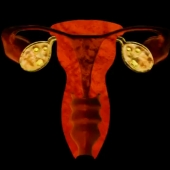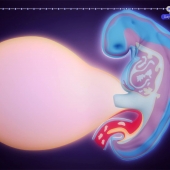Circumcision is the surgical removal of the foreskin from the penis of your male baby. It is usually done within the first few days of after birth. At birth, the penis has a protective sleeve of tissue called the foreskin, covering the glands or the head. The foreskin can usually be pulled back to expose the glands of the penis by puberty.
There are two ways circumcisions can be performed: by making an incision, or by using a plastic ring. Cleaning, pain management, and general care are the same for both circumcision methods.
During the procedure a small slit will be made in the foreskin and it will be loosened from the head. The caregiver will place a device over the glands. This device will protect the penis, allowing the foreskin to be safely removed. If a plastic device is used, the caregiver will tie the foreskin to the ring. Then, the foreskin will be trimmed and the ring will be left in place, and will fall off in five to seven days, leaving a healed circumcision.
The American Academy of Pediatrics believes that circumcision has potential medical benefits and advantages, as well as risks.
Medical benefits, including:
- A markedly lower risk of acquiring HIV, the virus that causes AIDS.
- A significantly lower risk of acquiring a number of other sexually transmitted infections (STIs), including genital herpes (HSV), human papilloma virus (HPV), and syphilis.
- A slightly lower risk of urinary tract infections (UTIs). A circumcised infant boy has about a 1 in 1,000 chance of developing a UTI in the first year of life; an uncircumcised infant boy has about a 1 in 100 chance of developing a UTI in the first year of life.
- A lower risk of getting cancer of the penis. However, this type of cancer is very rare in all males.
- Prevention of foreskin infections.
- Prevention of phimosis, a condition in uncircumcised males that makes foreskin retraction impossible.
- Easier genital hygiene.
- 14875 views













